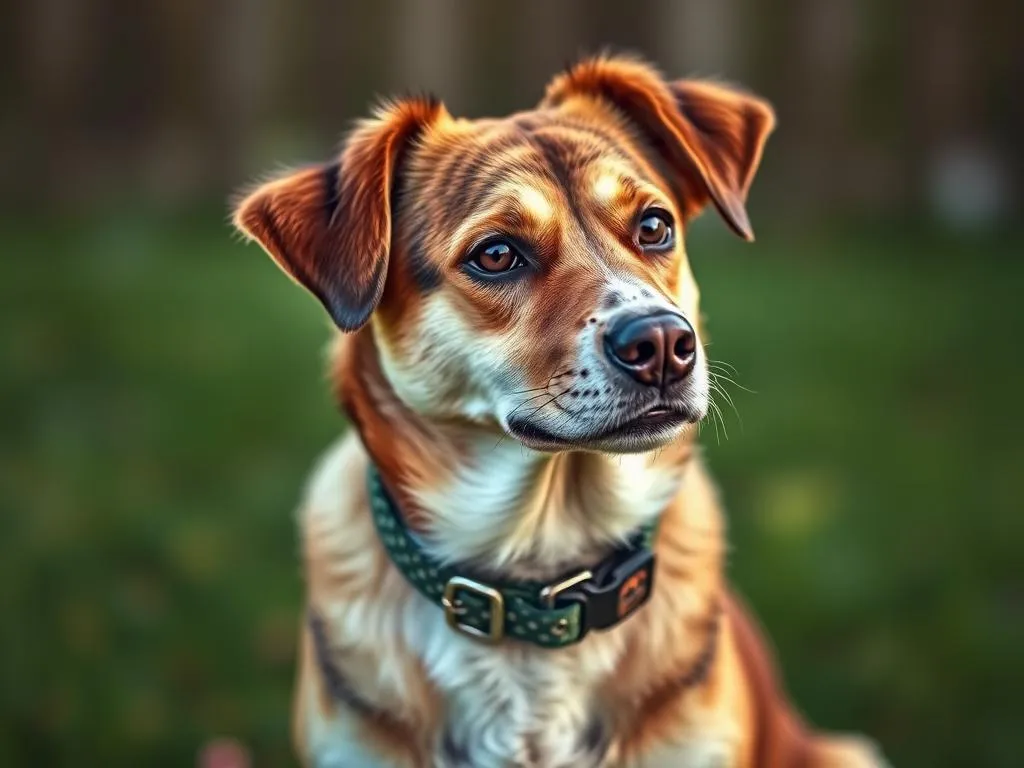
Choosing the right dog collar is crucial for any pet owner. A collar not only serves as a means of identification but also plays a significant role in training, ensuring safety, and even making a fashion statement. With so many options available, it can be overwhelming to find the perfect fit for your furry friend. This guide will help you navigate through the various types of collars, factors to consider, and recommendations tailored for specific needs, ensuring you make the best choice for your dog.
Types of Dog Collars
Flat Collars
Flat collars are perhaps the most common type of dog collar. Typically made of nylon or leather, they come with a buckle or snap closure and are designed to hold an ID tag and leash.
- Pros:
- Easy to put on and take off.
- Available in a variety of colors and designs.
-
Comfortable for everyday wear.
-
Cons:
- Can slip off if not properly fitted.
- May not be suitable for dogs that pull or are aggressive.
Best materials: Nylon is lightweight and water-resistant, while leather is durable and stylish but may require more maintenance.
Martingale Collars
Martingale collars are designed to provide more control without choking the dog. These collars tighten when the dog pulls but are designed to fit loosely when the dog is calm.
-
Ideal for: Breeds with narrow heads (like Greyhounds) or dogs that tend to slip out of their collars.
-
Pros:
- Offers greater control.
-
Prevents choking.
-
Cons:
- Can be misused if not understood properly.
- Requires careful fitting to avoid injury.
Harnesses vs. Collars
While collars are standard for holding ID tags and leashes, harnesses distribute pressure more evenly across a dog’s body, making them a great option for certain situations.
-
When to choose a harness: If your dog has respiratory issues, is prone to pulling, or is in training, a harness may be the better option.
-
Pros of harnesses:
- Reduces strain on the neck.
-
Helps with training.
-
Cons of harnesses:
- Can be cumbersome for some dogs.
- May require more time to put on.
Head Collars
Head collars look similar to horse halters and are designed to control a dog’s head, making it easier to guide them.
- Pros:
- Excellent for training and managing behavior.
-
Helps control large or strong dogs.
-
Cons:
- Can be uncomfortable if not fitted correctly.
- Requires proper training for the dog to accept it.
Factors to Consider When Choosing a Dog Collar
Dog Size and Breed
The size and breed of your dog greatly influence your collar choice.
- Small breeds: Opt for lighter materials and smaller sizes. Collars should be adjustable to avoid choking.
- Medium breeds: Look for collars that balance durability and comfort.
- Large breeds: Choose collars made from strong materials that can withstand pulling.
Material and Durability
Collars come in various materials, each offering different levels of durability and comfort.
- Nylon: Lightweight, water-resistant, and available in many colors.
- Leather: Stylish and durable, but can be heavy and may require maintenance.
- Biothane: A synthetic material that’s waterproof, strong, and easy to clean.
Adjustability and Fit
A proper fit is vital for both safety and comfort.
- How to measure: Use a soft tape measure around your dog’s neck, ensuring you can fit two fingers between the collar and the dog’s neck.
Purpose and Functionality
Consider what you need the collar for. Some collars serve specific functions, such as training or casual wear.
- Training collars: Often equipped with features like reflective materials for visibility in low light, or GPS trackers for safety.
The Best Dog Collars for Different Needs
Best Dog Collars for Training
When it comes to training, the right collar can make all the difference. Training collars like martingale collars or head collars help control your dog without causing harm.
- Recommendations:
- PetSafe Martingale Collar: Known for its adjustability and comfort.
- Gentle Leader Head Collar: Effective for managing pulling and overly excited dogs.
Best Collars for Small Dogs
Small dogs require collars that are lightweight but secure. Look for collars that are adjustable and avoid bulky designs.
- Top recommendations:
- Blueberry Pet Classic Collar: Stylish and comfortable.
- GoTags Personalized Dog Collar: Offers customization for identification.
Best Collars for Large Dogs
Large dogs need collars that can withstand strength and pulling. Durability is key.
- Top recommendations:
- Ruffwear Hoopie Collar: Built for outdoor adventures, featuring a strong design.
- PetSafe Adjustable Collar: Known for its durability and comfort.
Best Fashion Collars
For those who want their dog to make a style statement, fashion collars are an excellent choice. These collars can reflect your dog’s personality.
- Trendy options:
- Pawtitas Reflective Dog Collar: Stylish and safe for night walks.
- Molly & Bandit Custom Collar: Offers unique designs and personalization.
Maintenance and Care for Dog Collars
Cleaning and Hygiene
Regular cleaning is essential to maintain your dog’s collar.
- Recommended methods:
- Nylon: Machine washable or rinse with water and mild soap.
- Leather: Wipe with a damp cloth and apply leather conditioner.
Inspecting for Wear and Tear
Regularly check your dog’s collar for signs of wear.
- How to check: Look for fraying, cracks, or discoloration. If any damage is evident, it’s time to replace the collar.
Seasonal Considerations
Your dog’s collar needs may change with the seasons.
- Summer: Opt for lightweight, breathable materials.
- Winter: Consider collars that can handle wet weather and are easy to clean.
Common Myths and Misconceptions About Dog Collars
Myth: All Collars Are the Same
Not all collars are created equal. Different designs cater to specific needs, such as training or identification.
Myth: Collars Are Only for Identification
Collars serve multiple purposes, including training, safety, and style.
Myth: Using a Collar Is Always Safe
A poorly fitted collar can pose safety risks. It’s crucial to ensure the collar fits properly and is suitable for your dog’s behavior.
Conclusion
Choosing the best dog collars involves considering your dog’s specific needs, size, and behavior. A well-fitted collar not only ensures safety but also enhances your dog’s training experience and style. Regular maintenance is essential for longevity and hygiene. Remember, the right collar can make a world of difference in your dog’s comfort and your peace of mind.
FAQs
What size collar should I get for my dog?
Measure your dog’s neck and refer to the sizing chart of the collar brand.
How often should I replace my dog’s collar?
Inspect regularly; replace if you notice wear or if it no longer fits properly.
Can I use a collar for a puppy?
Yes, but ensure it’s adjustable as puppies grow quickly.
Are there any collars to avoid for certain breeds?
Yes, some collars may not be suitable for brachycephalic breeds due to their neck structure.
What’s the best collar for a dog that pulls?
Consider a harness or a martingale collar, as they provide better control without risking injury.









